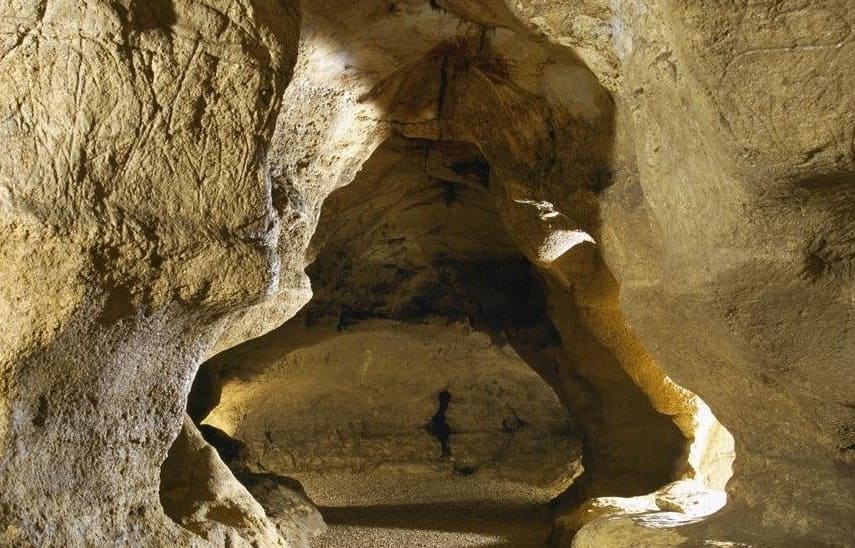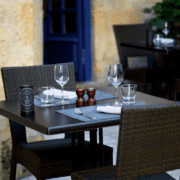
The cave of Pair-non-Pair: historical monument since 1901
If you are passionate about prehistoric art, the Pair-non-Pair cave is a must-see destination. This archaeological treasure houses one of the oldest sets of cave engravings in Europe. Located a few kilometers from Bordeaux, it is a place that will transport you more than 30,000 years back in time. Discover all its secrets while taking a free tour of Bordeaux, an ideal experience to learn more about this wonderful city.
Discover the Pair-non-Pair cave in Gironde
This extraordinary prehistoric monument is located approximately 45 km north of Bordeaux, in the municipality of Prignac-et-Marcamps, near the Dordogne and the Gironde estuary. Although the name “Pair-non-Pair” might suggest a peculiar arrangement of the engraved figures, there is not much information available on the specific origin of the name. Nevertheless, this site is of great archaeological importance.
The cave is part of the rich cultural heritage of New Aquitaine. Moreover, it represents one of the most valuable testimonies of European Paleolithic art. Its strategic location, close to the Gironde estuary and the Dordogne river, makes it an essential point of interest for lovers of Bordeaux’s curiosities.
Brief history of the cave of Pair-non-Pair
The archaeologist François Daleau discovered the cave on March 6, 1881. This local scholar dedicated a large part of his life to the study of this prehistoric treasure.
The excavation work lasted until 1913, during which time Daleau recorded each discovery in his meticulous “excursion notebooks”. His methodical work revealed an exceptional sequence of human occupation ranging from the Mousterian (about 80,000 years ago) to the Gravetian (about 25,000 years ago), passing through the Châtelperronian and Aurignacian.
The archaeological wealth of the cave includes thousands of flint tools, along with valuable objects carved in bone and ivory. However, the most spectacular find is the parietal engravings. Distributed in seven different panels, these engravings represent a variety of prehistoric fauna: horses, mountain goats, deer, bison and mammoths. These rock art works are among the oldest known engravings in the world.
The importance of this discovery made the Pair-non-Pair cave the third decorated cave discovered in the world, after Altamira in Spain and Chabot in Ardèche. This historical fact contributed to its declaration as a Historic Monument in 1901, making it one of the first prehistoric sites to receive this distinction in France.
Guided tours of the cave of Pair-non-Pair
The experience lasts approximately 50 minutes. An expert guide will accompany you on this journey into the past with detailed explanations about the engravings and life in the Paleolithic era. If you are thinking about what to see in Bordeaux with children, this visit is an excellent choice. The little ones will be fascinated to discover the art of our ancestors.
Prices and reservations
The entrance fee is 13€ per person. Children under 18 years old and young people from the EU between 18-25 years old enjoy special discounts. Advance booking is essential to guarantee your place.
Recommendations for the visit
The temperature in the interior is stable all year round. We recommend wearing comfortable clothes and avoiding large backpacks. Photography is not allowed inside the cave in order to preserve the engravings.
How to get to the Pair-non-Pair cave from Bordeaux?
The most direct route takes approximately 45 minutes. If you are wondering what to see in Bordeaux in 4 days, you can dedicate a morning or an afternoon to explore this wonderful cave. The route is simple: follow the A10 to Libourne and continue on the D137 to Prignac-et-Marcamps.
There is no direct connection by public transport. In this case, we recommend combining a train to Saint-André-de-Cubzac with a local cab service.
What to see near the Pair-non-Pair cave?
If you visit the cave, take the opportunity to explore the surrounding area, which has several attractions:
- Citadel of Blaye: historic fortress declared a World Heritage Site by UNESCO, just 20 kilometers from the cave of Pair-non-Pair.
- Saint-Émilion: a medieval village with extraordinary vineyards, also a World Heritage Site. Famous for its monolithic church and its subway cellars. Discover all its treasures in our guide on what to see in Saint-Émilion.
- Côtes de Bourg vineyards: the prestigious wine region where you can taste excellent wines and visit centuries-old cellars.
- Moulin du Grand Puy de Lansac: a restored old mill located in the heart of the Côtes de Bourg vineyard. It produces artisanal flour from wheat, rye and other cereals.
- Archaeological site of Plassac: Gallo-Roman villa with well-preserved mosaics that perfectly complements the visit to the cave.
- Estuary of the Gironde: The largest estuary in Western Europe, ideal for boat trips and nature observation.
The Pair-non-Pair cave is an exceptional testimony of our ancestors. Its cave engravings, more than 30,000 years old, take you back to the dawn of humanity. Visiting this historic monument allows you to contemplate some of the first artistic manifestations of our species. Do not miss the opportunity to discover this archaeological treasure unique in the world.



